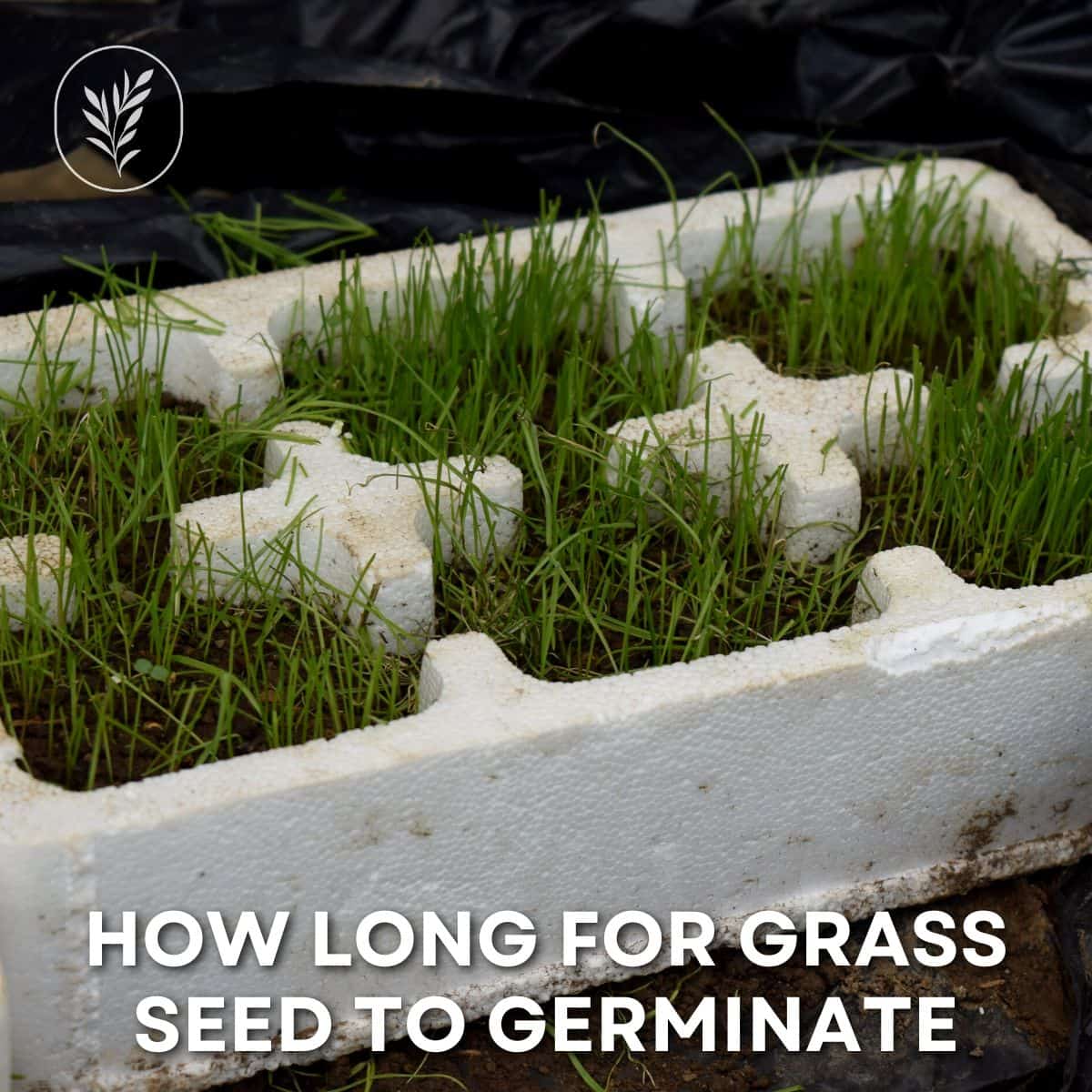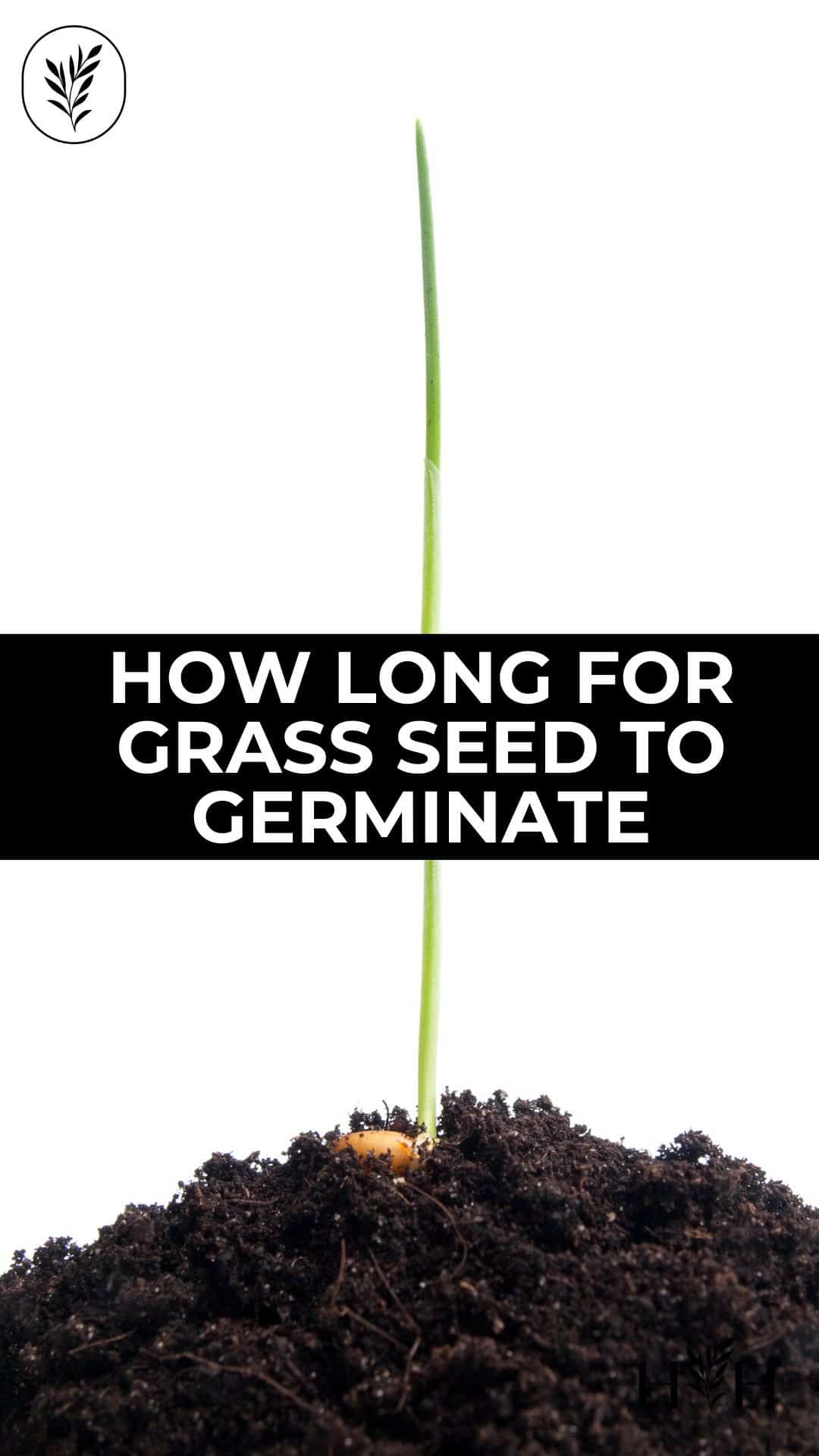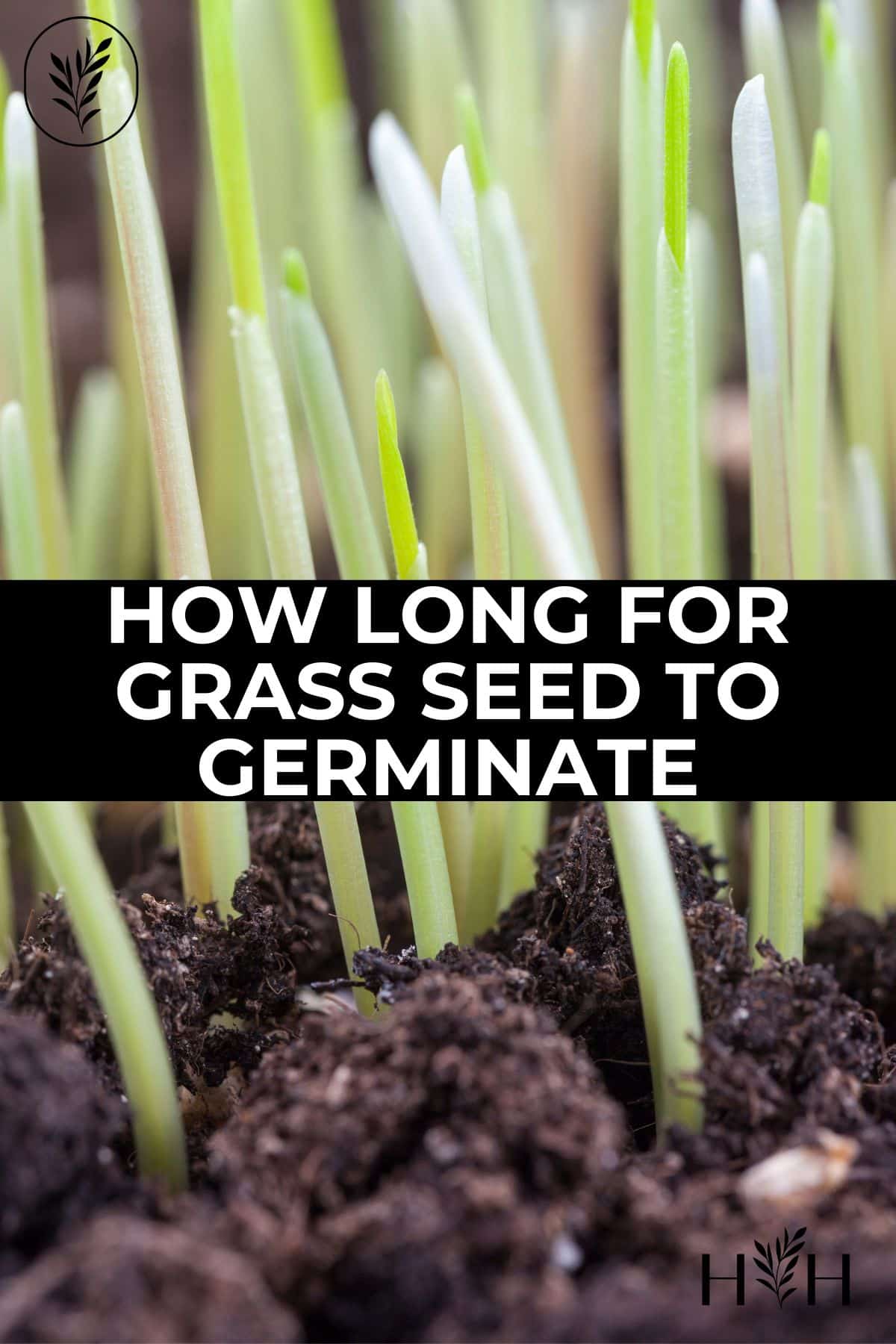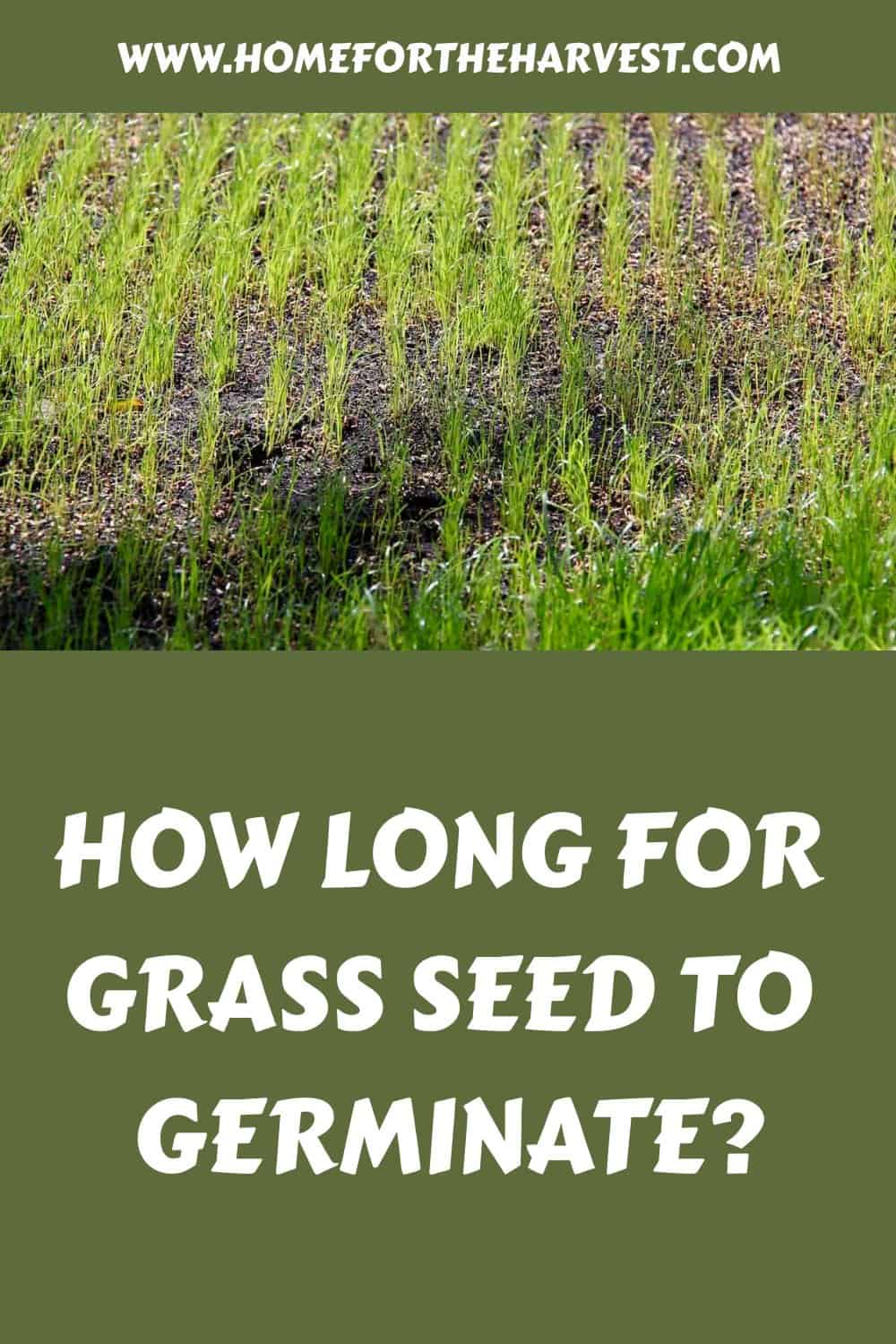Waiting for the grass to grow is admittedly not the most exciting part of lawn care. I was curious about how long it takes for grass seed to germinate once a lawn area has been seeded and watered. Here’s what I found.
How long does it take for a grass seed to germinate? Some varieties of grass seed will germinate in under a week, while others can take up to a month just to germinate! And of course, the grass seed varieties that tend to make the nicest residential lawns are the ones that take quite a while to start sprouting.
Each type of turf grass has a different expected germination time under ideal conditions. A mix of different grass seeds won’t necessarily all sprout at once! Read on to learn more about the seed germination times for common types of turf grass.
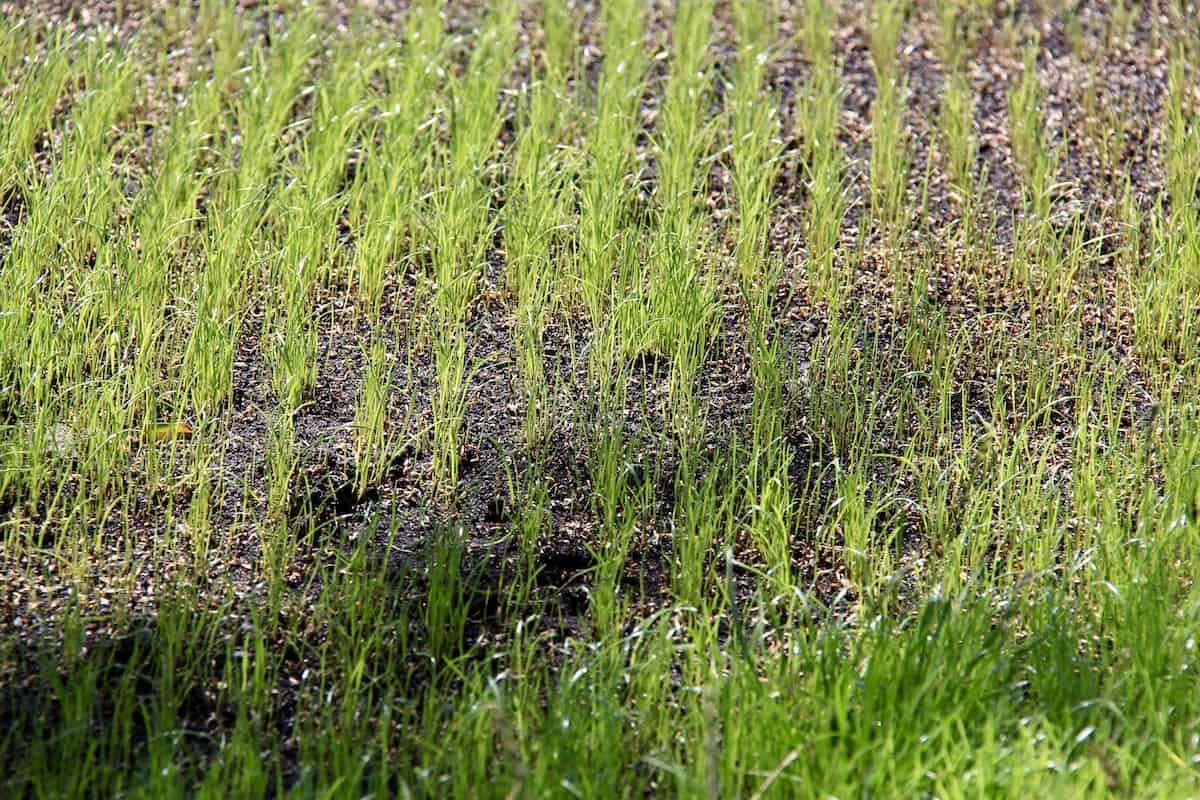
Germination times for grass seeds of various turf species
The germination time for almost grass seeds typically ranges between 5 and 30 days, depending upon the type of grass. Here are the estimated expected germination times for common turf grass species under ideal conditions:
| Climate | Turf Species | Expected Germination Time (days) |
|---|---|---|
| Cool-Season | Annual Ryegrass | 5-10 |
| Cool-Season | Perennial Ryegrass | 5-10 |
| Cool-Season | Tall Fescue | 7-14 |
| Cool-Season | Fine Fescue (Creeping Red Fescue, Hard Fescue, Chewings Fescue, Sheep Fescue) | 7-14 |
| Cool-Season | Rough Bluegrass | 7-10 |
| Cool-Season | Kentucky Bluegrass | 14-28 |
| Warm-Season | Bentgrass | 10-14 |
| Warm-Season | Bermudagrass | 10-28 |
| Warm-Season | Buffalograss | 14-28 |
| Warm-Season | Centipede Grass | 14-21 |
| Warm-Season | Zoysia Grass | 21-30 |
In general, cool-season grasses are quicker to germinate than warm-season grass types. Among cool-season grasses, Rye Grass germination time is one of the quickest, while Kentucky Bluegrass takes the longest time to germinate.
“A lawn of Kentucky bluegrass is often considered the lawn by which all other lawns are judged. Characterized by the deep green/blue color and the fine texture, Kentucky bluegrass is as durable as it is good looking.”
The Lawn Bible: How to Keep It Green, Groomed, and Growing Every Season of the Year, by David R. Mellor, Fenway Park’s Master Groundskeeper
Warm-season grasses will take at least a week or two to germinate, with Zoysia grass generally taking the longest amount of time to germinate. The long germination times of warm-season grasses are one of the reasons many homeowners opt to buy plugs of existing plants rather than grass seed.
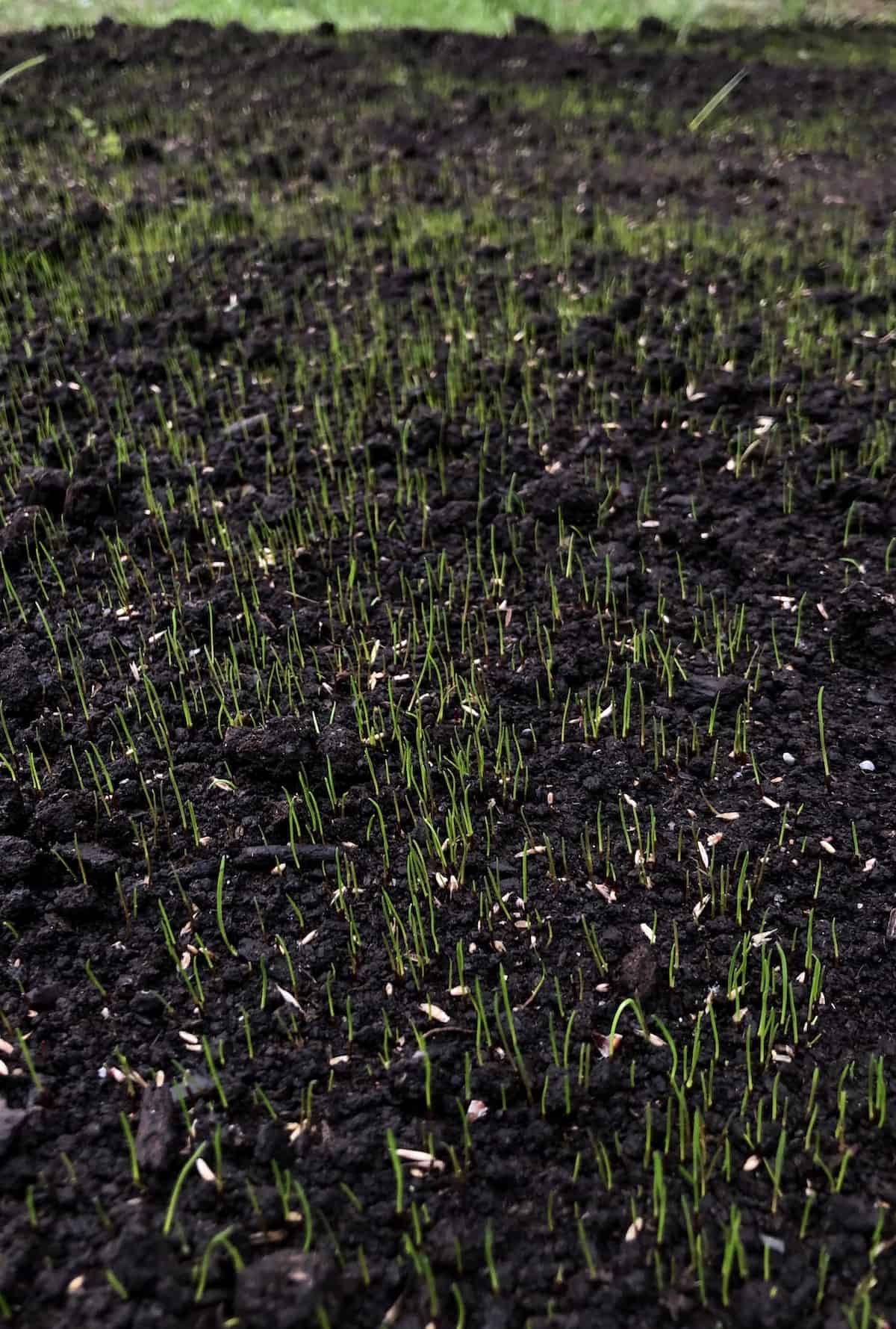
Waiting for grass seed to sprout and grow
So, waiting for grass seeds to germinate and sprout is not a quick process. Don’t be surprised if you seed your lawn and don’t see little grass sprouts during the first week. The delay is completely normal and should be expected. The germination process is complex and doesn’t happen instantly.
Cool-season grasses are generally sold in a mix of different species of grasses. Grass seed mixes could contain Bluegrass, Ryegrass, AND Fescue – all of which may germinate at different times once the seeds have been initially moistened. Remember that difference in duration when you’re outside watching and waiting for the grass to grow!
“Straight warm-season grasses produce the best lawns in the South, but in cool climates, mixtures or blends are better choices.”
Rodale’s Successful Organic Gardening: Lawns, Grasses and Groundcovers, by Lewis Hill & Nancy Hill
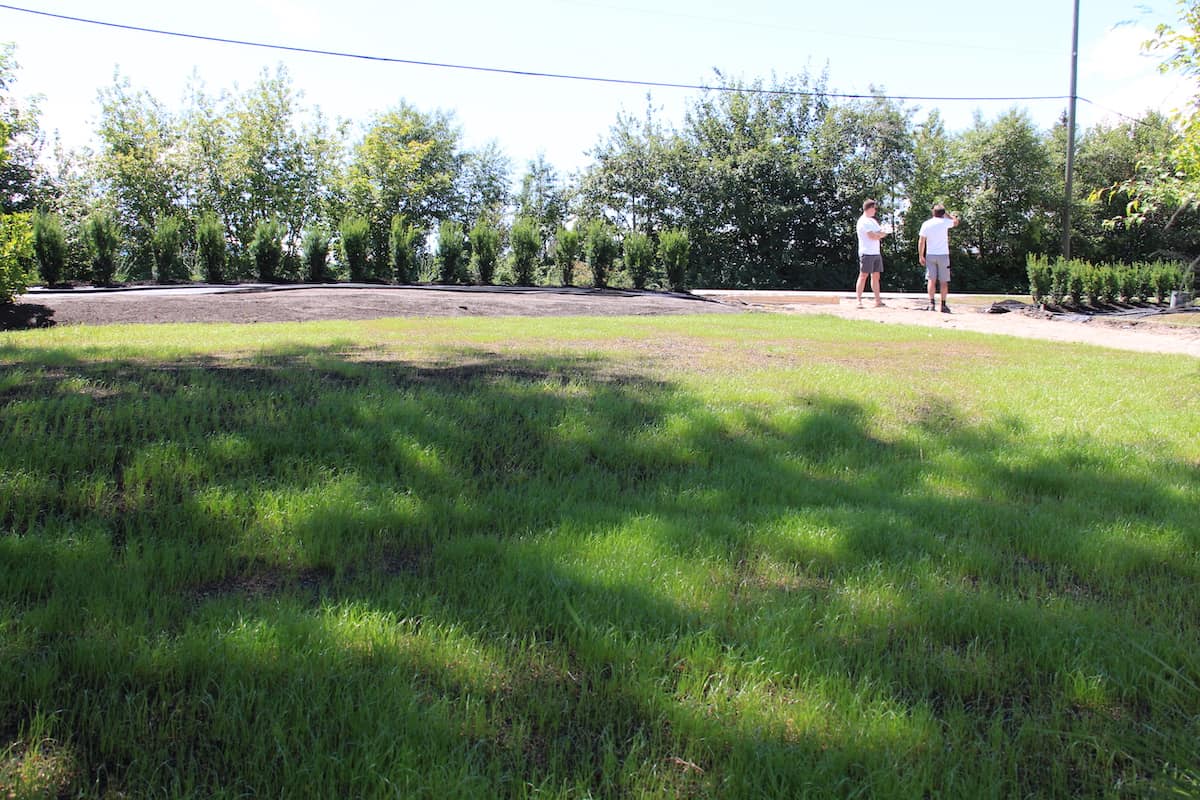
Because it germinates fast, almost all grass seed mixes have a bit of Ryegrass seed added in so that the customer “sees results quickly”. Ryegrass, however, isn’t the most sought-after turf grass. Perennial Ryegrass is tough and is used in mixes for sports fields and playgrounds, but Annual Ryegrass won’t even survive through the winter. The Ryegrass is in the mix so that the customer can see germination happening (and convince them to keep watering!).
“Perennial ryegrass is often combined in seed mixes with Kentucky bluegrass because it establishes quickly, filling in the lawn while the bluegrass takes longer to grow. It has fine-textured, shiny blades that are deep green. It is often used in high traffic areas and well-used lawns as it stands up very well to wear.”
The Lawn Bible: How to Keep It Green, Groomed, and Growing Every Season of the Year, by David R. Mellor, Fenway Park’s Master Groundskeeper
Kentucky bluegrass, the gold standard for beautiful northern lawns, takes a frustrating 14-28 days just to germinate! That means that the seed has to be kept moist for at least two weeks (and possibly up to a month) before you even see the little green sprouts appearing. No wonder grass seed companies add in a bit of Perennial Ryegrass to keep homeowners’ confidence up. If you’re looking for a lawn that’s quicker to germinate (and low-maintenance to boot), I recommend planting fine fescue.
“Different grass species germinate at different speeds – from less than a week to as long as 30 days – so if you’re planting a mixture, keep in mind that they won’t all sprout at once.”
Rodale’s Successful Organic Gardening: Lawns, Grasses and Groundcovers, by Lewis Hill & Nancy Hill
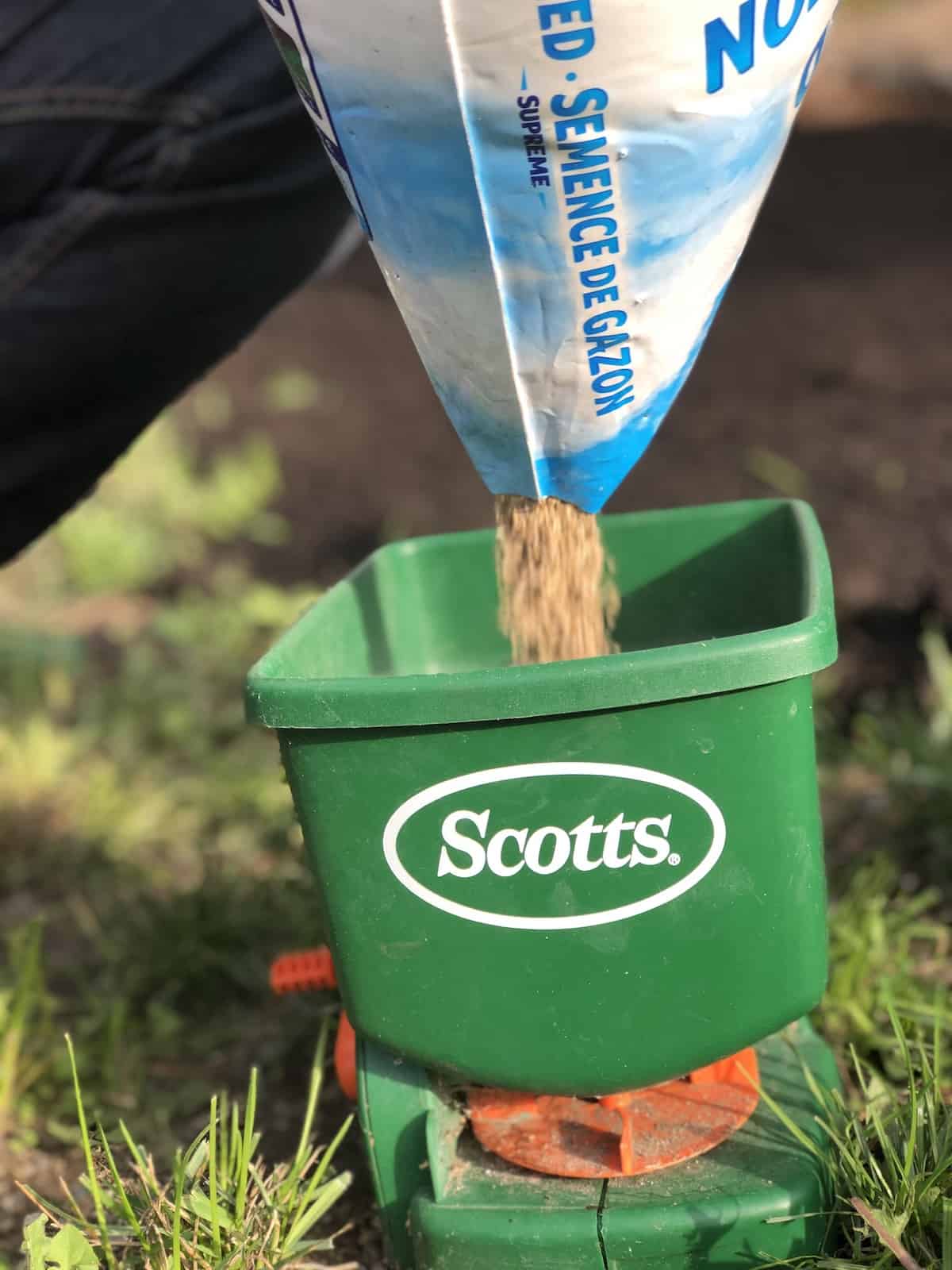
Balancing grass seed turf quality with germination times
So, cool-season grass seed mixes often contain some amount of lower-turf-quality grass seed due to its short germination time. What we want to avoid, however, is any grass seed mix that has just been overloaded with this lower-quality seed simply because it also happens to be cheaper for the manufacturer to the source.
The highest quality turf grass for sunny areas is Kentucky Bluegrass (at least 6 hours of direct sun). Look for a mix that contains about 80% Kentucky Bluegrass, with the remaining 20% (or less) Perennial Ryegrass. Ryegrass germination time is about a week, while the Bluegrass portion will take at least two weeks to sprout.
The highest quality turf grass for shady areas is Fine Fescue (Creeping Red Fescue, Hard Fescue, Chewings Fescue, and Sheep Fescue). Shady areas are generally seeded with 100% Fine Fescue (less than 2 hours of direct sunlight per day). Partially-shaded lawns can be seeded with a mix of about 40-50% Kentucky Bluegrass, and 40-50% Fine Fescue, with the remaining 10-20% Perennial Ryegrass.
For high-quality turf grass, avoid mixes with over 25% Perennial Ryegrass. Avoid mixes that include any Annual Ryegrass or Rough Bluegrass, as these are low-quality filler grass seeds. Also, avoid mixes that aren’t weed-free or that contain filler material (stuff that is not grass seed).
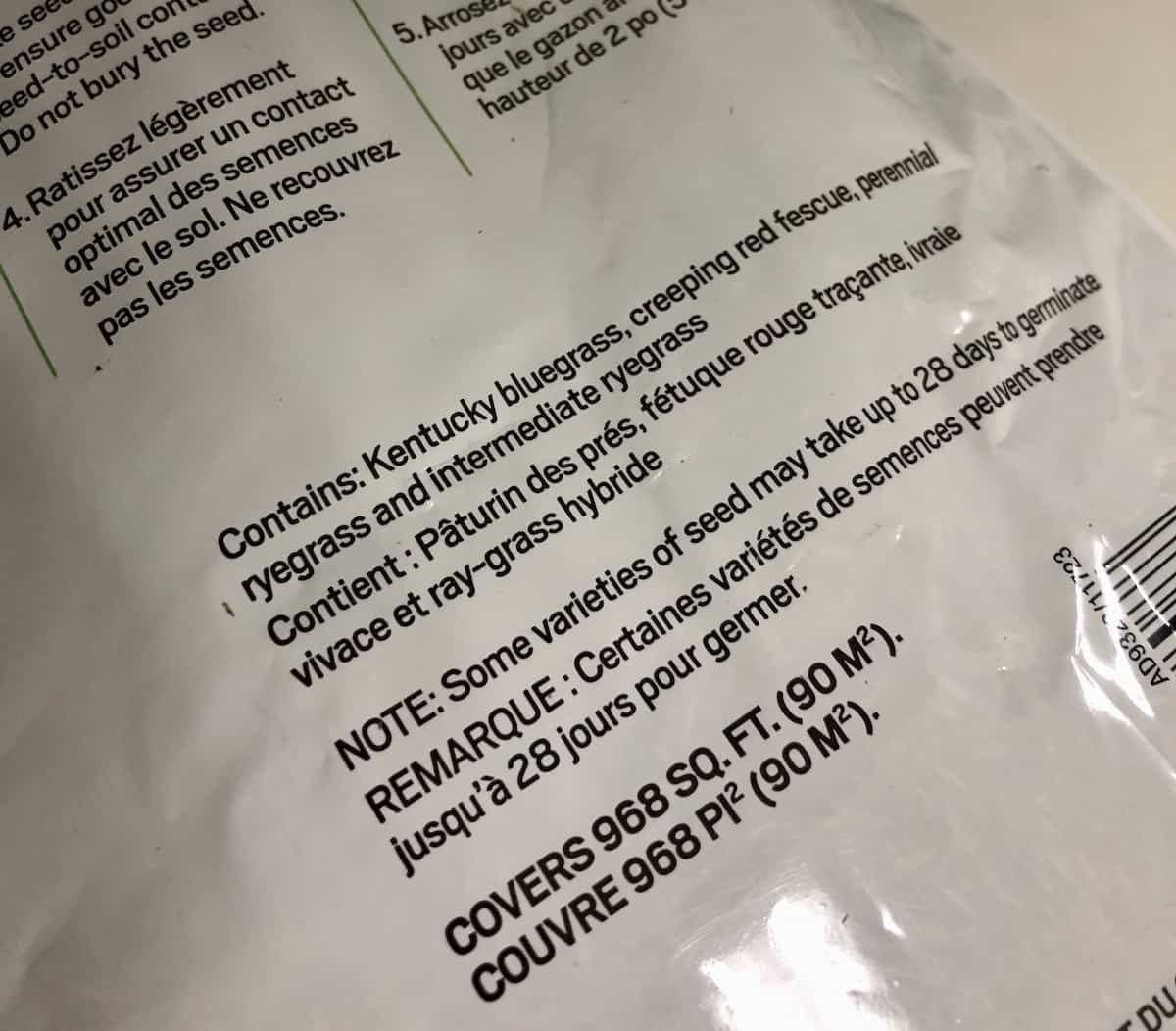
Factors affecting seed germination time
There are further factors affecting seed germination times beyond the type of grass species. The germination times listed above assume that environmental conditions are ideal for grass seed germination. That means that the soil is nice and warm, the seeds are kept moist, and the seeds are fresh. If conditions are less than ideal, germination can take even longer than the expected times dictate.
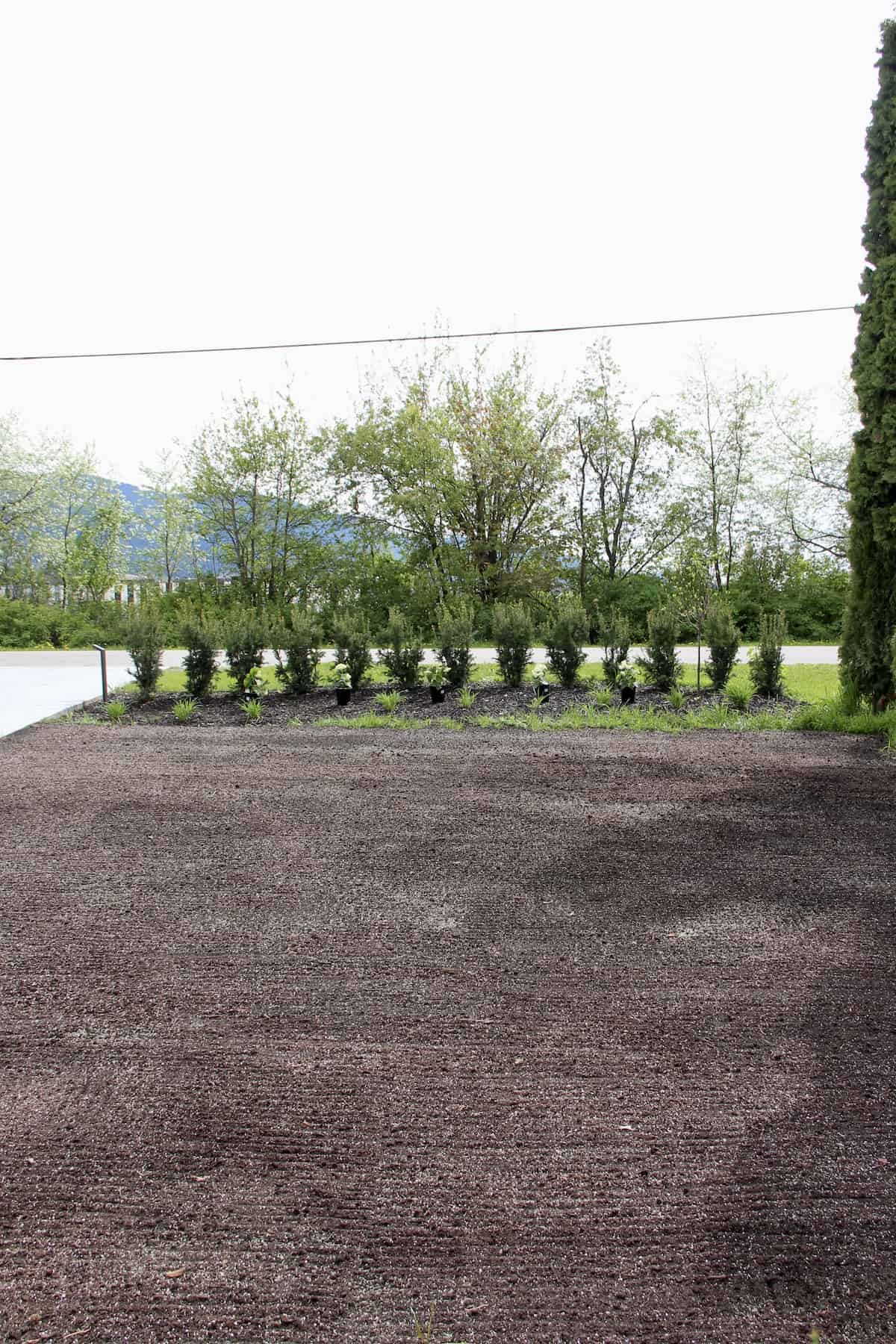
Soil temperature
Lawn soil needs to be at a consistent temperature of 55 degrees Fahrenheit (12.5 degrees Celsius) for optimum cool-season grass seed germination. This rarely occurs when air temperatures are below 60 degrees Fahrenheit (15.5 degrees Celsius), as the soil takes longer to warm up in the spring than the air does. Lower temperatures will delay or prevent the germination of the grass seed. Warm-season grasses require even warmer temperatures for germination.
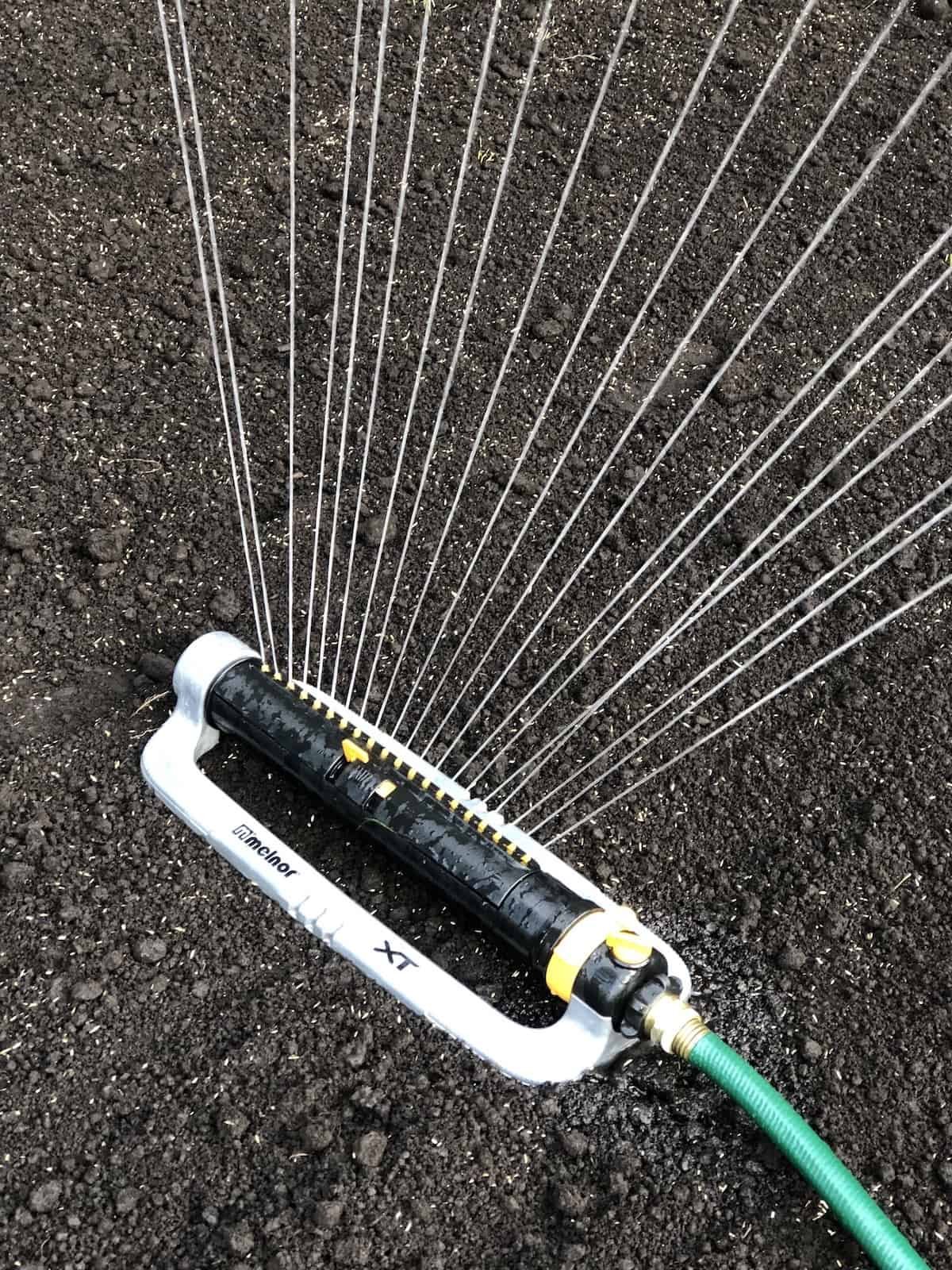
Soil moisture
Grass seeds will not germinate at all without sunlight, water, and air. While lawn surfaces are generally adequately supplied with some sunlight and air, having enough water for germination is a common issue. The seeds must be moistened and should be kept moist until they sprout. Dry grass seed simply will not germinate, no matter how long you wait.
The seeds have to be kept moist, but they shouldn’t be in a puddle of water either. There needs to be the right amount of moisture content in the soil for your grass seeds to germinate. Water the grass seed daily (and possibly even more frequently in sunny, dry conditions). Check the soil moisture levels regularly by pushing in a screwdriver and checking the soil moisture with your fingers.
“Anyone committed to growing a healthy lawn will likely, at some point, have to apply water above and beyond what Mother Nature provides.”
The Organic Lawn Care Manual: A Natural, Low-Maintenance System for a Beautiful, Safe Lawn, by Paul Tukey
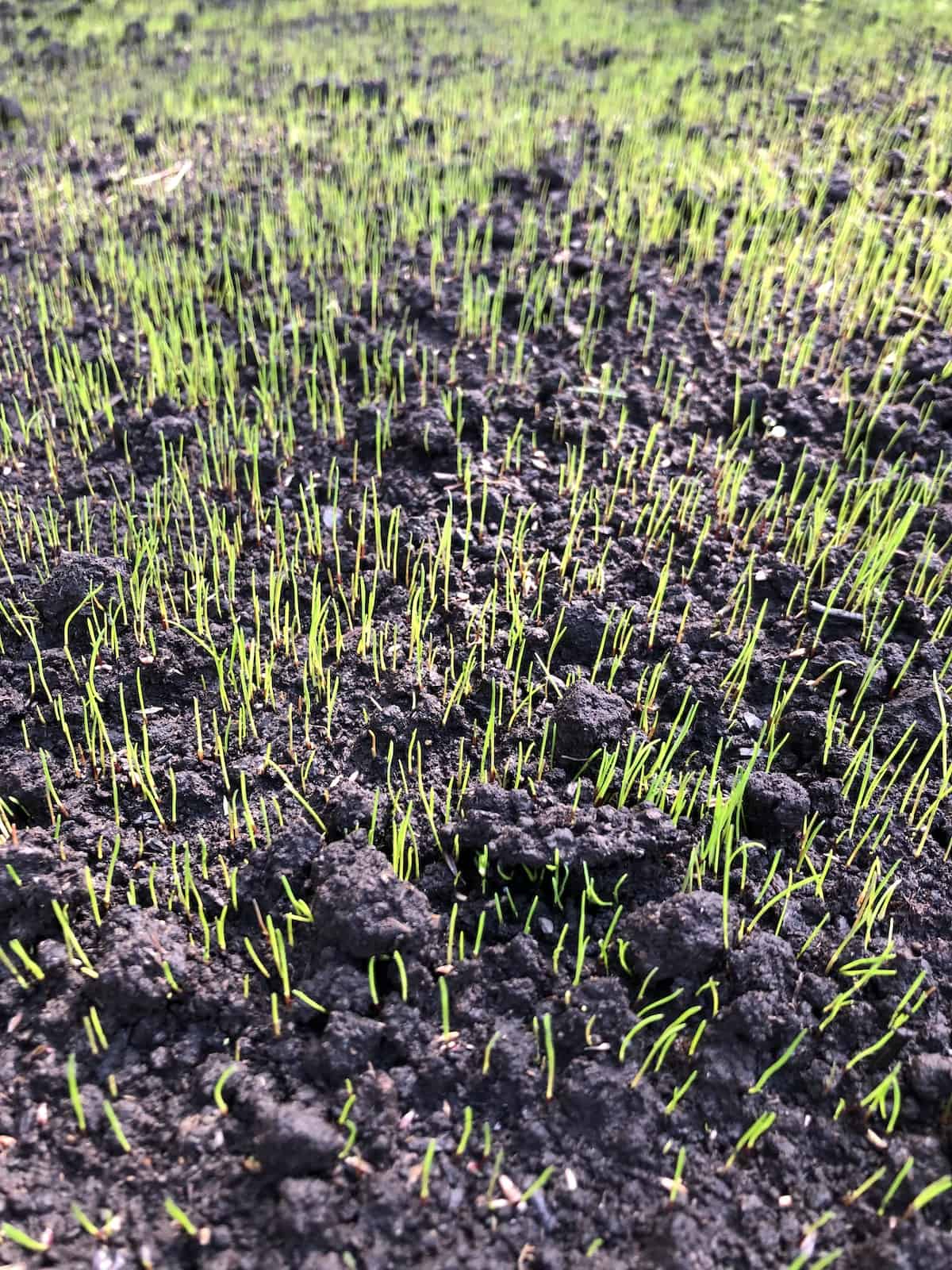
Grass seed age
Grass seeds lose their ability to germinate as they age. Only buy as many grass seeds as you will need within the calendar year. Grass seed isn’t a product to buy in bulk every five years! If the seeds are stored in a cool, dry, and moisture-free place, however, they can generally be used for up to 3 years.


